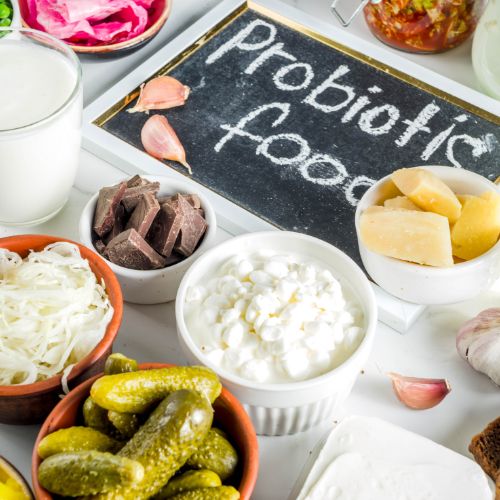The Gift of Beauty

Written by Dr. Jewel Alfoure, ND
To propose that beauty is a function of health may not be shocking to many. Almost everyone believes the notion that healthy bodies are more likely to fit the beauty standard. Moreover, most people know that skin health can be affected by our internal health. However, many do not know that factors of health that may not seem connected to skin health can play a significant role at keeping skin healthy, beautiful and youthful. Such factors include blood sugar balance, vascular health and healthy immunity. (1)

Many non-skin conditions affect health in a way that makes the upkeep of healthy skin difficult or even impossible.
Conditions that affect hormone balance make it harder for the skin to remain youthful looking. On the other hand, insulin resistance for example, promotes hyper pigmentation, skin tags, changes to skin texture and an increase in the severity of skin infections. (2,3,4)
Autoimmune conditions like Hashimot’s thyroiditis change the texture of the skin, making it easier to dry and get injured. Changes to the lipid profile make it harder for the body to maintain healthy blood flow and peripheral tissues. (5)
Thus, beauty is almost always a gift given as a token of appreciation for the maintenance of good health!
Vascular Health

Factors that affect vascular health play a significant role in skin health. Skin is a very peripheral organ which means it is one of the last organs to get blood flow.
By the time the blood makes its way to the blood vessels in the skin, most of the nutrients in the blood have been utilized by other, more proximal tissues. (6)
Thus, high quality, efficient blood vessels are required to absorb the most nutrition and nourish the skin. Further, increasing the efficiency of blood flow to the skin also means better detoxification and waste clearance. (6,7)
Blood Sugar Balance
Though blood sugar balance may seem like a metabolic issue, blood sugar can play a significant role at changing the texture and the quality of the skin. Further, the fluctuations in blood sugar may play a role in increasing the rate of aging and adding to the probability of developing skin pigmentation issues. Maintaining healthy blood sugar levels may also decrease the chance of developing skin tags and may enhance the smoothness of the skin. (8,9)

Healthy Immunity

Healthy immunity may appear to be a factor in keeping away pathogens and while that is correct, healthy immunity is a bigger ordeal for those with autoimmune conditions. Autoimmune conditions affect the skin through the blood as the natural immunity of the body loses an ability known as “self-tolerance”.
Conditions like psoriasis and vitiligo affect the skin through the attack of immune cells that see skin cells as a threat! Immune stability results in better “self-tolerance” and less damage to skin, less symptoms and slower disease progression. Additionally, in the case of skin breakage/ damage, the body has a better ability to focus on fighting opportunistic pathogens and preventing infections from making the skin condition harder to heal. (10)
Very few people think about maintaining healthy immunity to gain beautiful skin and consider looking into their vascular health to improve skin quality. However, even with the best, most natural, highest quality, topical skin care, the limitation of particle size remains an important factor that makes topical applications go only so far in maintaining skin health. Further, the effect of topical applications may result in better looking skin, and skin protection, however, topicals can only affect the process of skin aging so much. (11)
Types of Aging

Aging can be divided into two distinct types. Internal aging, and external aging. Internal aging is the aging that takes place due to the progression of making genetic copies over time and has a lot to do with the genetic integrity being lost. Additionally, intrinsic aging is affected by “epigenetics” which is the choice of the body to express genes depending on environmental factors like food choice and stress levels.
External aging is the aging that takes place due to the exposure to environmental elements. Those elements include air pollution, dry, cold, hot and even damp weather. The single most damaging environmental factor that promotes premature aging, however, is sun exposure. (12, 13)
The exposure to ultraviolet radiation from the sun means literal fraying of the skin. The body tries its best to repair the tissues, but over time, the errors that take place due to free radicals and damage are impossible to keep up with and skin inconsistencies follow. Such inconsistencies include hyperpigmentation, changes to texture and the formation of lines. (14)
Factors for Slowing External Aging
While topical protection does provide the skin with excellent protection against external aging, the skin can only repair, after the damage is done, with a healthy body. True nourishment can only reach the deeper skin tissues from the inside as the skin stem cell is hidden under many layers of skin.
Most natural ingredients do not penetrate deep enough to reach the basal layers of skin. On the other hand, even if they did, the effects of immunity, blood sugar balance and vascular health remain an important player in skin health.
Factors of Health that Lead to the Gift of Beauty
Black Seed Oil
Nigella sativa is a powerful little flower that gives us the tiny black seeds from which black seed oil is pressed. The oil is full of many powerful constituents, hundreds of them! The most popular constituent in blackseed oil is known as thymoquinone. (15)
Black seed oil is a safe culinary oil in the Middle East that is fed to people of all ages. Many high quality articles demonstrate that black seed oil is a stabilizer of the immune system and a factor for improving vascular health. Through those properties , black seed is shown to have an infinite number of benefits that span from infectious disease immunity, lung health, gastrointestinal health, heart health and many skin benefits. (16)
In fact, literature demonstrates that combining both topical as well as internal use of black seed oil can significantly improve symptoms of skin autoimmune conditions, promote skin healing and provide protection/ stabilization of melanocytes (pigment cells). To learn more about the benefits of Black Seed for the skin (Click here) (15,16, 17)
Greens and Antioxidants
Ever wonder why it seems like the skin on the face ages way faster than the skin everywhere in the body? The face is exposed to more elements including more direct sun as it does not get covered by clothing. The result is skin that is exposed to high oxidant load and thus skin that shows much more visible signs of aging. (12)
Greens, berries and healthy foods carry many different antioxidants that help directly with the repair of tissues exposed to damage. Greens maintain vascular integrity, provide a fast boost of nutrients and supply the body with slower acting antioxidants. Those antioxidants are very great at staying active until they reach more peripheral tissues which means that they can provide the skin with internal antioxidant support. If you want to learn more about the effect of greens on health (Click here) (17,18, 19, 20)
Anti-oxidants can not be explained without reference to the King of Orthomolecular medicine (vitamin C). Vitamin C is an agent that humans can not synthesize and require for the making of collagen and the maintenance of healthy tissues. As an antioxidant, vitamin C’s ability to lower the damage caused by free-radicals and enhance the natural repair process makes it an indispensable agent to “internal” skin protection! Additionally, when combined with bioflavonoids, Vitamin C adds to the strength and the resilience of blood vessels and thus the efficiency of nutrient transfer. (21)
Sea-buckthorn oil
Unlike regular moisturizers that are limited by the size of the particle that can cross the skin, natural, ingestible, oils are safe to combine when used internally and externally. When used internally, oils like sea-buckthorn oil preserve blood vessels, lower inflammation and moisturize epithelia (internal coverings). (22, 23)
Additionally, studies show that the combination of Sea Buckthorn oil external use with internal use results in a higher magnitude of effect on the enhancement of collagen levels and the decrease in wrinkle depth and appearance. If you want to learn more about sea buckthorn oil. (Click Here) (24)
Cranberry seed oil
Some of the best oils for maintaining skin health can be extracted from plant seeds like cranberry seed. The cranberry seed provides skin with the enhancement of its lipophilic barrier. (25, 26) Internally, cranberry seed oil is an oil that maintains vascular health, promotes healthy blood lipids and provides the body with antioxidants. (27) If you would like to learn more about the benefits of cranberry seed oil (click here).
References
-
Maluki AH, Abdullah AA. Metabolic associations with skin tags. International Journal of Dermatology and Clinical Research. 2016 Feb 20;2(1):003-11.
-
ALBRINK MJ, MEIGS JW. Interrelationship between skinfold thickness, serum lipids and blood sugar in normal men. The American journal of clinical nutrition. 1964 Nov 1;15(5):255-61.
-
Greenwood AM. A study of the skin in five hundred cases of diabetes. Journal of the American Medical Association. 1927 Sep 3;89(10):774-6.
-
Napolitano M, Megna M, Monfrecola G. Insulin resistance and skin diseases. The Scientific World Journal. 2015 Jan 1;2015.
-
Baldini E, Odorisio T, Tuccilli C, Persechino S, Sorrenti S, Catania A, Pironi D, Carbotta G, Giacomelli L, Arcieri S, Vergine M. Thyroid diseases and skin autoimmunity. Reviews in Endocrine and Metabolic Disorders. 2018 Dec;19(4):311-23.
-
Garshick MS, Barrett TJ, Wechter T, Azarchi S, Scher JU, Neimann A, Katz S, Fuentes-Duculan J, Cannizzaro MV, Jelic S, Fisher EA. Inflammasome signaling and impaired vascular health in psoriasis. Arteriosclerosis, thrombosis, and vascular biology. 2019 Apr;39(4):787-98.
-
Bielli A, Scioli MG, Mazzaglia D, Doldo E, Orlandi A. Antioxidants and vascular health. Life sciences. 2015 Dec 15;143:209-16.
-
Noh HS, Kim MJ. Analysis of the Effect of Blood Sugar, Calcium, Chloride Ions, and Blood Urea Nitrogen on Skin Wrinkles. 아시안뷰티화장품학술지.;19(1):77-88.
-
Lavalle JB. Relora: The Natural Breakthrough to Losing Stress-Related Fat and Wrinkles. Basic Health Publications, Inc.; 2003.
-
Plikus MV, Van Spyk EN, Pham K, Geyfman M, Kumar V, Takahashi JS, Andersen B. The circadian clock in skin: implications for adult stem cells, tissue regeneration, cancer, aging, and immunity. Journal of biological rhythms. 2015 Jun;30(3):163-82.
-
Farage MA, Miller KW, Berardesca E, Maibach HI. Clinical implications of aging skin. American journal of clinical dermatology. 2009 Apr;10(2):73-86.
-
Cao C, Xiao Z, Wu Y, Ge C. Diet and skin aging—From the perspective of food nutrition. Nutrients. 2020 Mar;12(3):870.
-
Bocheva G, Slominski RM, Slominski AT. Neuroendocrine aspects of skin aging. International journal of molecular sciences. 2019 Jan;20(11):2798.
-
Panich U, Sittithumcharee G, Rathviboon N, Jirawatnotai S. Ultraviolet radiation-induced skin aging: the role of DNA damage and oxidative stress in epidermal stem cell damage mediated skin aging. Stem cells international. 2016 Oct;2016.
-
Tavakkoli A, Mahdian V, Razavi BM, Hosseinzadeh H. Review on clinical trials of black seed (Nigella sativa) and its active constituent, thymoquinone. Journal of pharmacopuncture. 2017 Sep;20(3):179.
-
Okasha EF, Bayomy NA, Abdelaziz EZ. Effect of topical application of black seed oil on imiquimod‐induced psoriasis‐like lesions in the thin skin of adult male albino rats. The Anatomical Record. 2018 Jan;301(1):166-74.
-
Osman MT, Hamza AJ, Omar E, Adnan A. The new miracle of Habbatus Sauda: its major component thymoquinone can be used in the management of autoimmune diseases. Procedia-Social and Behavioral Sciences. 2014 Mar 19;121:304-14.
-
Draelos ZD. Aging skin: The role of diet: Facts and controversies. Clinics in dermatology. 2013 Nov 1;31(6):701-6.
-
Nguyen HP, Katta R. Sugar Sag: Glycation and the Role of Diet in Aging Skin. Skin therapy letter. 2015 Nov 1;20(6):1-5.
-
Purium AT, Sandoval D, Venner A. The Power of Greens.
-
Boyera N, Galey I, Bernard BA. Effect of vitamin C and its derivatives on collagen synthesis and cross‐linking by normal human fibroblasts. International journal of cosmetic science. 1998 Jun;20(3):151-8.
-
Zielińska A, Nowak I. Abundance of active ingredients in sea-buckthorn oil. Lipids in health and disease. 2017 Dec;16(1):1-1.
-
Rafalska A, Abramowicz K, Krauze M. Sea buckthorn (Hippophae rhamnoides L.) as a plant for universal application. World scientific news. 2017;72:123-40.
-
Zeng L, Tang HJ. The Health Effects of Sea Buckthorn. InApplied Mechanics and Materials 2014 (Vol. 675, pp. 1642-1645). Trans Tech Publications Ltd.
-
Ahmad N, Anwar F, Abbas A. Cranberry Seed Oil. InFruit Oils: Chemistry and Functionality 2019 (pp. 663-674). Springer, Cham.
-
Shivananda Nayak B, Dan Ramdath D, Marshall JR, Isitor G, Xue S, Shi J. Wound‐healing properties of the oils of Vitis vinifera and Vaccinium macrocarpon. Phytotherapy Research. 2011 Aug;25(8):1201-8.
-
Eno M. The effect of the supplementation of cranberry seed oil on the lipid profiles of human subjects.








Leave a comment